
Logan and Albert Conservation Association

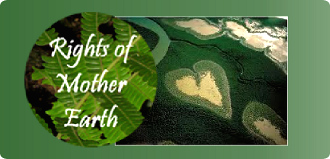 At times we humans feel threatened by some of our native animals and call for government to protect us from these creatures we cannot control. What can we control? Animals that are vulnerable to our physical strength suffer many inhumanities - based on inherited practices. Since 2008 laws in Queensland have protected threatened flying-foxes from being shot and electrocuted, requiring farmers to use non-lethal methods, such as netting, to protect their crops. But the Liberal National Party have said that if elected they will overturn these laws. This backwards step in animal protection may once again mean flying-foxes can be shot and electrocuted, causing widespread suffering and further threatening this dwindling species' numbers. Katter's Australia Party have also made some worrying statements about animal welfare.
At times we humans feel threatened by some of our native animals and call for government to protect us from these creatures we cannot control. What can we control? Animals that are vulnerable to our physical strength suffer many inhumanities - based on inherited practices. Since 2008 laws in Queensland have protected threatened flying-foxes from being shot and electrocuted, requiring farmers to use non-lethal methods, such as netting, to protect their crops. But the Liberal National Party have said that if elected they will overturn these laws. This backwards step in animal protection may once again mean flying-foxes can be shot and electrocuted, causing widespread suffering and further threatening this dwindling species' numbers. Katter's Australia Party have also made some worrying statements about animal welfare.
Inhumane practices extend to our companion animals and livestock that provide food. Life in the fast lane has distanced us fron nature - its ambience and tranquility, its free ecosystems sevices such as clean air, clean water, pollination of plants for beauty and food. A life of convenience comfort and pleasure - bought as cheaply as possible - is expected now by many.
2012 - the year of RIO+20 is a time for reflection of our values aspirations vision for the future - a sustainable future for both the human species and all other interdependant life. This global summit needs to matched at our own local and regional levels as we go about our daily lives - respecting and valuing all forms of life - biodiversity.
Admittedly some folk feel a colony of flying foxes may be noisy and somewhat messy, but others value the services provided - from pollinating our eucalypt trees to devouring thousands of small insects. We can not duplicate those services. Imagine an Australia without gum trees!
Fear of death from Hendra virus has been dramatised in the media and demonised the flying fox. In reality there are far greater hazards we contend with on a daily basis. In most instances managing our own human behaviours can reduce risks.
Our ever growing human population is placing a heavy burden on the world's resources. In Australia we have a species extinction rate which is embarrassing. Becoming well informed conscious consumers is everyone's responsibility. Learning to live lightly on the planet can only help to preserve its biodiversity.

The Flinders Karawatha Corridor (the corridor) is recognised for its significant conservation, recreation, cultural heritage and social values. It is identified as a 'Landscape corridor' in the section Desired Regional Outcome 3.2 of the South East Queensland Regional Plan (SEQRP 2009-2031). A 'Landscape corridor' is defined under the Desired Regional Outcome 3.2 of the SEQRP as:
• Lineal areas with current or potential high confluence of landscape values and ecosystem services that have the capacity to improve connectivity between core landscape areas, people, places, infrastructure and ecosystems.
The corridor extends 60km from Karawatha Forest in Brisbane's outer suburbs to south of Ipswich at Flinders Peak and on to the Wyaralong Dam near Boonah.
Four local government areas fall within the corridor: Brisbane, Logan and Ipswich City Councils, and Scenic Rim Regional Council.
CLICK ON MAP TO GO TO DERM website look at or download maps
Have your say
Comments and ideas from landowners and the wider community are critical to the success of the Flinders Karawatha Corridor Project. You can send your feedback to:
The Community NRM Officer
SEQ Catchments
PO Box 13204
George St QLD 4003
Or email to This email address is being protected from spambots. You need JavaScript enabled to view it.
Submissions and feedback close on Friday 16 December 2011 at 5:00 pm.
Within the northern Logan section we are concerned that we encourage government to include low lying bioregional areas to provide connectivity for wildlife to move east-west, not just north-south in higher altitude areas.
http://www.nrm.qld.gov.au/land/planning/pdf/fkc-admin-plan_ap21302.pdf provides black and white not to scale map
http://www.nrm.qld.gov.au/land/planning/pdf/fkc-conserv-rec-areas.pdf updated 2013
Putting Nature on the Balance Sheet talks by Pavan Sukhdev
Pavan Sukhdev is currently on a two year sabbatical from Deutsche Bank, after being appointed by the EU Commission and Germany to lead the G8+5 report on The Economics of Ecosystems and Biodiversity TEEB . He is fast becoming known as the Nicholas Stern of Biodiversity.
He has been speaking at events around Australia where have been sold out - to listen to an environmental economist. Click on image aside to view events arranged for August 2011.
'Managing people's desire for things like food, energy, water and medicinal drugs in a way that reduces the impact on the planet's diversity is no mean task,' says Pavan.
'Indeed this is the greatest challenge that faces society today.'
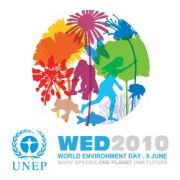 Biodiversity is the variety of all living things; the different plants, animals and micro organisms, the genetic information they contain and the ecosystems they form. Biodiversity is usually explored at three levels – genetic diversity, species diversity and ecosystem diversity. These three levels work together to create the complexity of life on Earth.group is linked to the International Year of Biodiversity 2010 website, a joint venture between the Australian Museum and the Council of Australasian Museum Directors (CAMD). This project includes museums across Australia working with people and communities to discover, celebrate and promote biodiversity, and encourage participation in biodiversity events all around the country.
Biodiversity is the variety of all living things; the different plants, animals and micro organisms, the genetic information they contain and the ecosystems they form. Biodiversity is usually explored at three levels – genetic diversity, species diversity and ecosystem diversity. These three levels work together to create the complexity of life on Earth.group is linked to the International Year of Biodiversity 2010 website, a joint venture between the Australian Museum and the Council of Australasian Museum Directors (CAMD). This project includes museums across Australia working with people and communities to discover, celebrate and promote biodiversity, and encourage participation in biodiversity events all around the country.
Flickr.com is an amazing social website which allows us to share globally - or privateIy our photos videos and more.
The International Year of Biodiversity 2010 Flickr website is intended to be a 'biodiversity hub' for events in Australia. The site allows you to promote your biodiversity news and events, share your stories and ideas.
The aim of this group is to invite you to post your photos here and have them displayed also on our International Year of Biodiversity 2010 website. You can also add stories, follow our Twitter feed and even share videos - anything to do with biodiversity is warmly welcomed!
 UNEP launches a new report that states restoring lost and damaged ecosystems—from forests and freshwaters to mangroves and wetlands—can trigger multi-million dollar returns, generate jobs and combat poverty. The report, entitled Dead Planet, Living Planet: Biodiversity and Ecosystem Restoration for Sustainable Development, underlines that far from being a tax on growth and development, many environmental investments in degraded, nature-based assets can generate substantial and multiple returns.
UNEP launches a new report that states restoring lost and damaged ecosystems—from forests and freshwaters to mangroves and wetlands—can trigger multi-million dollar returns, generate jobs and combat poverty. The report, entitled Dead Planet, Living Planet: Biodiversity and Ecosystem Restoration for Sustainable Development, underlines that far from being a tax on growth and development, many environmental investments in degraded, nature-based assets can generate substantial and multiple returns.
The TUNZA Regional Youth Conference on Biodiversity continued today in Kigali, Rwanda. The conference began on 2 June and will see 35 youth from around all sub-regions of Africa share and discuss biodiversity in Africa.
Achim Steiner, UNEP Executive Director says
"Let WED 2010 be a moment-- of many moments in 2010-- when the history books record that the world took note,
seized the opportunities and deployed its collective knowledge,
abundant science and technology, financial acumen and prowess, intelligence and compassion to
build a global society with value-environmental, social and economic."
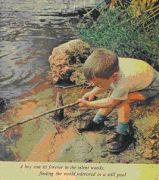 From all sections of the globe the scientific community is alerting us to the risks that our children and future generations will face if our new urban designs fail to account for the full potential for humans to develop in their natural evolutionary home. In America an organization Children and Nature has been working for several years to help us understand - and to provide assistance - the essential connection humans have with natural areas. This is the bush, fresh water country creeks, boulders and hills, forest litter, butterflies and bugs, all species great and small. Children need freedom to explore in their own time, in their own - to play in the dirt.
From all sections of the globe the scientific community is alerting us to the risks that our children and future generations will face if our new urban designs fail to account for the full potential for humans to develop in their natural evolutionary home. In America an organization Children and Nature has been working for several years to help us understand - and to provide assistance - the essential connection humans have with natural areas. This is the bush, fresh water country creeks, boulders and hills, forest litter, butterflies and bugs, all species great and small. Children need freedom to explore in their own time, in their own - to play in the dirt.
There are many resources available on their website. http://www.childrenandnature.org
The built environment does not provide the same opportunities the physical, mental, and social benefits that contact with the outdoors and nature provides to children.
Now that globally more than 50% of people live in cities, unless natural areas are included within accessable walking range, we potentially run the risk of losing the breadth of all of human stages of development.
In Australia research concurs with a 2007 State Government investigation into playground spaces in Victoria finding that young children ''need exposure'' to natural environments to appreciate the ''complex variations of texture, sound, light, smell, colour and temperature''.
The subsequent government report - The Good Play Space Guide - highlighted the creative impulses that can be fostered by play with the ''loose parts'' of nature - the leaves, twigs and gumnuts. But how realistic is it to expect today's kids to get out in the bush?
 The world we share with other species of nature - all co-existing on the one plant and sharing the same biosphere - has many life skills to share with us - if we can only see and understand. Tom McKeag who teaches bio-inspired design at the California College of the Arts and University of California, Berkeley has nominated his 2009 Tommy Awards.
The world we share with other species of nature - all co-existing on the one plant and sharing the same biosphere - has many life skills to share with us - if we can only see and understand. Tom McKeag who teaches bio-inspired design at the California College of the Arts and University of California, Berkeley has nominated his 2009 Tommy Awards.
He has also decided to give the awards to the creatures that inspired the innovation, rather than the human inventors. This is an amazing new non-destructive application of technology and a whole new world for design.
The penguin, in the strictest biomechanical sense, doesn't really swim underwater, but rather flies. That is, the creature gets both lift and thrust from the action of its flapping, planar wings. It has inspired the latest development in robots highlighted by the German engineering firm Festo AG at the Hanover Messe Trade Exhibition in April.
The Aquapenguin mimics the hydrodynamic body features of the bird and is made with soft material and glass fibre rods, a motor and 3D sonar device by Evologics of Berlin. These allow the bot to swim with great flexibility and avoid collisions with obstacles or other swimmers, important in situations demanding a high degree of flexibility and autonomy. Festo has already developed a commercial product, an industrial arm with a gripper end, based on this technology.
 Today marks forty years since the commencement of Earth Day. Before you just dismiss it as another day, take a moment to reflect on all those people who are devoted to making a difference and what each of us can do in our daily lives to help our shared home on planet earth.
Today marks forty years since the commencement of Earth Day. Before you just dismiss it as another day, take a moment to reflect on all those people who are devoted to making a difference and what each of us can do in our daily lives to help our shared home on planet earth.
Forty years after the first Earth Day, the world is in greater peril than ever. While climate change is the greatest challenge of our time, it also presents the greatest opportunity – an unprecedented opportunity to build a healthy, prosperous, clean energy economy now and for the future. Earth Day 2010 can be a turning point to advance climate policy, energy efficiency, renewable energy and green jobs.
Earth Day Network is galvanizing millions who make personal commitments to sustainability.
Earth Day 2010 each 22 April is a pivotal opportunity for individuals, corporations and governments to join together and create a global green economy. Join the more than one billion people in 190 countries that are taking action for Earth Day.
UN Secretary General Welcome Message for the 2010 International Year of Biodiversity from CBD on Vimeo.
The United Nations declared 2010 to be the International Year of Biodiversity. At the Johannesburg Summit 2002 the international community set itself the goal of making a "substantial reduction in the rate of loss of biological diversity" by 2010 but this is not happening. In fact biologists talk about sixth extinction wave and they estimate that the rate of species extinction is about 1,000 times higher than the natural background rate, mostly because of human activities: habitat loss, exploitation and climate change.
Janine Benyus shares nature's designs
Transcript of a TED TALK
It is a thrill to be here at a conference that's devoted to "Inspired by Nature" -- you can imagine. And I'm also thrilled to be in the foreplay section. Did you notice this section is foreplay? Because I get to talk about one of my favorite critters, which is the Western Grebe. You haven't lived until you've seen these guys do their courtship dance.
We know that there is a strong global trend towards urbanisation. Two hundred years ago the world's urban population was around 3 per cent. One hundred years ago, it was 14 per cent. According to a UN report (Global Environmental Outlook 2: Past, Present and Future Perspective, 2002), about half of the world's population now lives in urban areas; every week, over a million people leave their rural lives behind for the uncertain promise of the city.
Now more than half of the world's population live - or want to live - in an urban environment. And here in South East Queensland the state and some local councils are encouraging people to come - for a perceived economic prosperity.
Climate change and urbanisation are two major drivers of change in the 21st century. A third is the rapidly growing population - wth China being the only country with the politcal will to atempt to manage that growth. The ways in which these trends interact and how we respond to them will be of great consequence to the wellbeing of human populations and all life.
We can now say with considerable certainty that as the 21st century unfolds, climate change will have an increasing impact on the environment and human society worldwide. As much as we might like to avoid thinking about it, most prudent people now understand that we must plan and prepare for a carbon-constrained future.
There are plenty of reasons for concern.
Urban populations consume more energy and other resources and export more carbon and waste per person, causing disproportionate harm to natural ecosystems. In many cases, cities are particularly vulnerable to the effects of climate change such as rising sea levels, increased storm surges, and temperature extremes. Large cities create their own 'urban heat island' - the heat given off from the city itself can make it warmer than the surrounding countryside. The health of many other vital environmental resources, including forests, oceans, rivers, and wetlands, that provide essential ecosystem services - such as stormwater management, air purification, and reduced heating and cooling - are also in jeopardy.
However, there are also solid reasons for hope.
Cities facilitate the peaceful exchange of ideas that drive social and economic innovation. Urban communities provide concentrations of human talent to envision and redesign sustainable and resilient cities, and the financial and technical resources to support these changes. When viewed as nested systems, central cities, the greater metropolitan communities that surround them, and the natural bioregions in which they are located, may prove to be the most effective forms and levels of organisation for creating, testing, refining and replicating innovative and ecologically appropriate solutions.
Innovations that emerge from one urban community can be adapted by different communities in ways that reflect the opportunities and needs of their particular bioregions. Through this process the original idea may becomes stronger and more robust, encouraging the next cycle of innovation. To a large extent, we can choose whether our cities become ecological sinks that suck up the resources of the countryside, or ecological arks where humanity gathers to sort out how best to respond to climate change and other environmental challenges.
A number of cities around the world are already demonstrating impressive leadership as they seek to become more sustainable. They include Amsterdam, the Netherlands; Bogotá, Columbia; Copenhagen; Denmark; Curitiba, Brazil, Reykjavik, Iceland; and Vancouver, Canada. Several cities in the United States have also accepted the challenge of becoming sustainable cities.
Portland with a population slightly over 568,000, while the greater Portland-Vancouver metro area approached 2.2 million people has performed well in a competition to determine the 'greenest' or 'most sustainable' city in USA.
Some of the key sustainability features of Portland include:
An extensive light rail network, bio-diesel powered buses and an aerial tram as part of a multi-modal transit system;Close to 450km of on-street bike lanes, bike boulevards and paved trails - bike commuting has experienced three straight years of double-digit growth;
Neighbourhoods consciously-designed to be pedestrian-friendly; A strong commitment by Portland State University to research and implement sustainability practices;City Repair, an organisation that helps neighbourhoods move their plans through city bureaucracy, coordinates meetings, provides experienced natural designers and builders, and helps find materials and funds; Portland's watershed management plan, including: a proliferation of 'eco-roofs' on houses and buildings, featuring a waterproof membrane, drainage material, a layer of soil and a cover of plants; permeable streets and parking lots that allow rain to soak into the ground; rain gardens and green streets with curbside bioswales to remove silt and pollution from run-off; and The conversion of a waterfront freeway into a three kilometre 'greenway' park
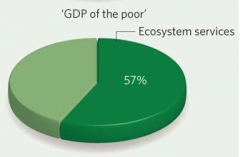
Pavan Sukhdev also has an article Costing the Earth available. He is study leader of the Economics of Ecosystems and Biodiversity (TEEB) project, United Nations
Clean air, fresh water, the flood protection provided by wetlands, the carbon-storage capacity of forests: these are examples of natural systems and processes that we largely take for granted. We consider them 'public goods': they are available to everyone; there is enough to go round; and one person's enjoyment of them does not impede another's. They are not traded in markets, not priced and they are mostly available for free.
 Although efforts to sustain biodiversity fall short, the issue is gaining attention as nations prepare for next year's 2010 International Year of Biodiversity summit. With nations admitting that they will fail to achieve their goal of significantly cutting biodiversity loss by 2010, a flurry of work is under way to develop new, more robust targets and ways of monitoring progress. These must be ready by next October, when the 193 parties to the Convention on Biological Diversity (CBD) meet in Nagoya, Japan.
Although efforts to sustain biodiversity fall short, the issue is gaining attention as nations prepare for next year's 2010 International Year of Biodiversity summit. With nations admitting that they will fail to achieve their goal of significantly cutting biodiversity loss by 2010, a flurry of work is under way to develop new, more robust targets and ways of monitoring progress. These must be ready by next October, when the 193 parties to the Convention on Biological Diversity (CBD) meet in Nagoya, Japan.
The article is available online though there is a cost for premium content from Nature 462, 263 (2009) | doi:10.1038/462263a http://www.nature.com/news/2009/091118/full/462263a.html. In addition to the highly visible components there are the unseen microbial biodiversity which is often neglected in most of biodiversity conservation programme. These are very essential for sustaining life on planet earth.
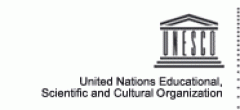 This week, the Noosa Biosphere is launching their new web site, described as an active place for community, special interests and visitors to connect with a broad range of biosphere reserve activity, with Michael Donovan, the Inaugural Chair of the Noosa Biosphere describing the web site as, "Punk in nature but logical in delivery and a striking example of creativity, commitment and practical outcomes from a locally based business".
This week, the Noosa Biosphere is launching their new web site, described as an active place for community, special interests and visitors to connect with a broad range of biosphere reserve activity, with Michael Donovan, the Inaugural Chair of the Noosa Biosphere describing the web site as, "Punk in nature but logical in delivery and a striking example of creativity, commitment and practical outcomes from a locally based business".
The Noosa Biosphere Reserve is also hosting a visit this week from Dr Natarajan Ishwaran, the UNESCO Secretary to the Man and the Biosphere Programme and Director of Earth Sciences, with over the two days of Dr Ish's visit, the hosting a Biosphere Q&A session and today the official launch of the Noosa Biosphere Reserve website www.noosabiosphere.org.au launch and a short film produced in Noosa.
Noosa, as Queensland's first UNESCO Biosphere is all about promoting harmony between people and nature through education, conservation and sustainable activities - all of which have a direct impact on the quality of Noosa as a tourism destination.
 You are cordially invited to view
You are cordially invited to view
A TRIBUTE TO
BENEDICT SCORTECHINI PIONEER, PRIEST, BOTANIST
18 - 20th September, 10am - 4pm
QUEENSLAND HERBARIUM
Brisbane Botanic Gardens
Mt Coot-tha Road, Toowong
AN EXHIBITION COMBINING
BOTANICAL ART, HISTORY AND THE SCIENCE OF BOTANY
by Botanical artist
Janet Hauser and the Qld Herbarium
This exhibition highlights the botanical discoveries and the contributions made by Father Benedict Scortechini (1845 - 1886), to the knowledge of the flora of S.E.Queensland
For more information contact the Queensland Herbarium on 38969326 or This email address is being protected from spambots. You need JavaScript enabled to view it.
Species extinction is a natural process and would occur without human actions. However, biodiversity loss has accelerated massively in recent years. Species are becoming extinct at a rate that has not been seen since the last global mass-extinction event.
The fossil record shows that the background extinction rate for marine life is 0.1-1 extinctions per million species per year; for mammals it is 0.2-0.5 extinctions per million species per year16. Today, the rate of extinction of species is estimated to be 100 to 1,000 times more than what could be considered natural. As with climate change, human activities are the main cause of the acceleration. Changes in land use exert the most significant effect. These changes include the conversion of natural ecosystems into agriculture or into urban areas; changes in frequency, duration or magnitude of wildfires and similar disturbances; and the introduction of new species into land and freshwater environments. The speed of climate change will become a more important driver of change in biodiversity this century, leading to an accelerating rate of species loss. Up to 30% of all mammal, bird and amphibian species will be threatened with extinction this century.
Biodiversity loss occurs at the local to regional level, but it can have pervasive effects on how the Earth system functions, and it interacts with several other planetary boundaries. For example, loss of biodiversity can increase the vulnerability of terrestrial and aquatic ecosystems to changes in climate and ocean acidity, thus reducing the safe boundary levels of these processes.